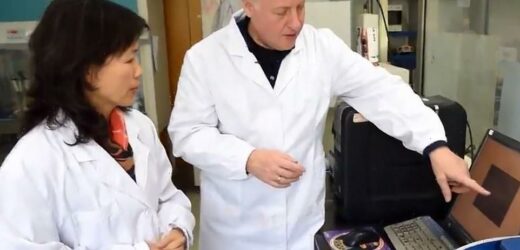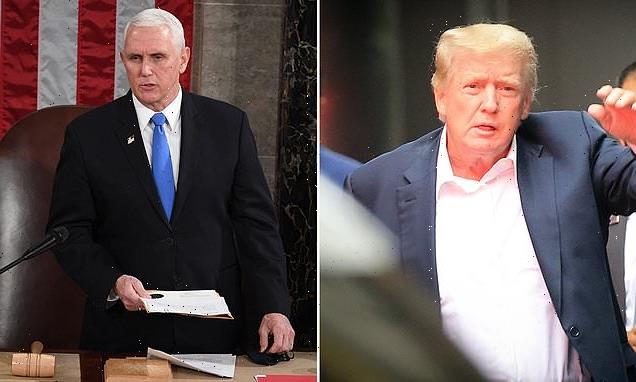A BRITISH scientist who tried to silence the Wuhan lab leak theory has been removed from the United Nations commission investigating the the origins of Covid.
Dr Peter Daszak has been ousted from the UN-backed Lancet probe as he has repeatedly attempted to dismiss allegations the virus could have escaped from the Wuhan Institute of Virology (WIV).
🔵 Read our coronavirus live blog for the latest updates
Dr Daszak is the president of the EcoHealth Alliance – a US-based organisation that was revealed to have funneled taxpayer cash to WIV to carry out gain of function research of bat-based coronaviruses.
The 55-year-old has a close relationship with the lab's chief Dr Shi Zhengli – dubbed "Batwoman" – and was last year jovially tweeting about singing karaoke with her and "partying in a bat cave" amid the pandemic.
WIV however are the prime suspect as circumstantial evidence mounts that link the origins of the virus to a lab leak as the US ordered a "redoubled" probe.
Dr Daszak was part of the much derided WHO investigation which visited Wuhan early this year, only to have its findings dismissed as a "whitewash" and thne be undermined by WHO's director on the same day as its release.
He remains listed on the website of the The Lancet COVID-19 Commission, but his profile has been updated to reflect his departure.
Under his photo and biography it now reads "recused from Commission work on the origins of the pandemic".
No further information was given – but Daszak has been widely blasted for appearing to have a conflict of interest over his links to WIV.
He was one of 28 experts from around the world asked to probe the origins of the virus and how best to respond to a pandemic.
It was organised by the UN Sustainable Development Solutions Network, which boasts it operates "under the auspices of the United Nations to mobilize scientific and technical expertise in support of the Sustainable Development Goals".
Dr Daszak's removal from the probe comes after he helped organise a letter signed by 27 scientists denouncing the lab leak as a "conspiracy theory" and "nonscientific".
"We stand together to strongly condemn conspiracy theories suggesting that COVID-19 does not have a natural origin," he said, in a statement signed by himself and the 26 others.
"Conspiracy theories do nothing but create fear, rumors, and prejudice that jeopardize our global collaboration in the fight against this virus".
The 2020 letter helped shape the narrative of the early days of the pandemic and quash very serious questions about whether WIV could have been linked to the virus.
Dismissed as a conspiracy theory, key questions went unanswered and the chance for early scrutiny of China and WIV over the origins of the lab may have been lost.
Some 18 months since the virus was first detected in Wuhan, only now are questions about the potential lab origin being taken seriously in mainstream discourse.
Scientists and experts who raised questions over the lab leak last year were dismissed and ridiculed.
While big tech firms like Facebook attempted to police the narrative under the auspices of "fake news" and "misinformation".
Dr Peter Palese, a microbiologist at the Icahn School of Medicine at Mount Sinai in New York, signed the Lancet letter but now acknowledges there are serious questions about the origins of the virus.
The 77-year-old told MailOnline: "I believe a thorough investigation about the origin of the Covid-19 virus is needed.
"'A lot of disturbing information has surfaced since the Lancet letter I signed, so I want to see answers covering all questions."
Dr Daszak had also previously denied that live bats were being studied at WIV – only for footage to emerging appearing to show the animals being handled at the lab.
He had already backpedaled on his comments and revealed they didn't even ask if WIV kept live bats when they visited as part of the WHO probe.
Covid may have escaped by a researcher getting infected, improperly disposed of waste, or potential breaches in the security at the lab.
Meanwhile, Dr Zhengli continues to furiously deny all allegations – accusing the world of "pouring filth on an innocent scientist".
What do we know about the Wuhan Institute of Virology?
THE WUHAN Institute of Virology is the highest security lab of its kind in all of China – and can be found right at the heart of the origins of the global pandemic
Various theories have been swirling about the lab, which is headed up by Chinese scientist Dr Shi Zhengli, known as “Bat Woman”.
Most scientists do not believe the virus leaked from the lab, and the lab itself has categorically denied the claims.
The lab specialised in bat-borne viruses and had been carrying out experiences on them since 2015.
Airlocks, full body suits, and chemical showers are required before entering and leaving the lab – the first in China to be accredited with biosafety level 4 (BSL-4).
BSL-4 labs are the only places in the world where scientists can study diseases that have no cure.
Scientists from the lab even tested mysterious
virus which killed three miners 1,000 miles away in Yunnan province back in 2012.
It has been suggested this fatal mystery bug may have been the true origin of Covid-19.
Experts at the lab also engineered a new type of hybrid 'super-virus' that can infect humans in 2015, according to medical journal Nature Medicine
Despite fears surrounding the research, the study was designed to show the risk of viruses carried by bats which could be transmitted to humans.
There is no suggestion the facility's 2015 work is linked to the pandemic.
The lab was also recruiting new scientists to probe coronaviruses in bats just seven days before the outbreak.
China has began tightening security around its biolabs with President Xi Jinping saying it was a “national security” issue to improve scientific safety at a meeting last February.
China has long been accused of covering up or distorting its role in the early days of the pandemic, with claims the Communist Party manipulated case and death figures while withholding information from WHO.
Beijing has a history of lab leaks in which deadly viruses have accidentally escaped and critics have highlighted what they allege is a gung-ho approach to safety.
There is currently no evidence to suggest the virus was intentionally released by China.
And there is renewed questions on the Mojiang Mine – where a mystery virus killed three miners in 2012, and from where Covid's closest living relative was recovered at a 96 per cent match.
Meanwhile, the hunt is on for the mysterious "Patient Su" – who could be one of the world's fist Covid cases and who lived just three miles from WIV.
China has accused the US of playing politics by stoking fears over a lab leak, and have even attempted to shift the focus to bio labs in the US.
It emerged last month Wuhan lab staff became sick and needed hospital care weeks before China admitted it was facing an outbreak.
And experts have claimed that the truth about Covid could bring "national shame" to China and topple the Communist Party.
Source: Read Full Article







